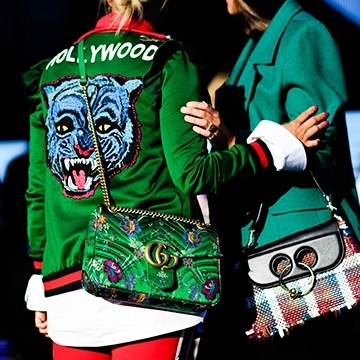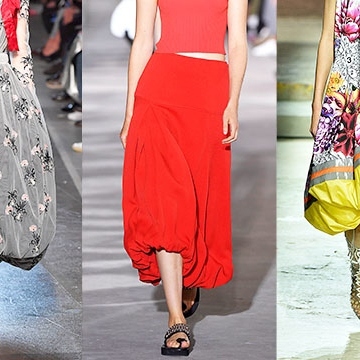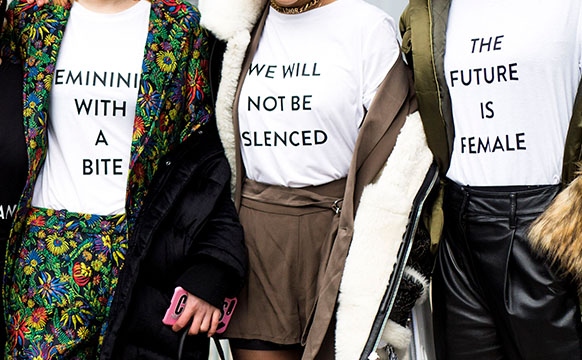
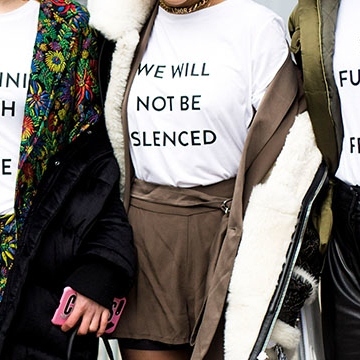
Style Opinion: the T-shirt Is Fashion’s Most Iconic Garment
What makes an icon an icon? Is it good design? Celebrity endorsement? Rarity, or, conversely, ubiquity? Is it merely serendipity, something new and unexpected that just so happens to be in the right place at the right time in history?
There’s no definitive “one size fits all” answer, and in fashion, like all changing social phenomena, it comes down to a confluence of random events, historical precedents and subversion of societal norms. Chanel designed the little black dress in a newfound era of women’s liberation. The Hermès Birkin’s level of jet-setting polish was the physical manifestation of the ultimate ‘70s style icon herself, Jane Birkin. And Burberry’s weatherproof trench quickly transcended its utilitarian purposes as civilians responded to the marriage of function, form and an idealized notion of the British soldier’s triumphant return.

Unlike the Hermès Birkin, Chanel’s LBD and the Burberry trench coat, however, the T-shirt is unique in its icon-hood. With its versatility, widespread availability and genderless, bipartisan status, it is everywhere, and belongs to everyone. It is a tabula rasa, a blank slate that anyone can adopt and use for self-expression. It is the ultimate symbol of democratized fashion.
The origin of fashion’s most iconic statement piece is rooted in perhaps the least sexy of all clothing: long johns. Though Victorian women’s lightweight undergarments pre-dated (and inspired) long underwear and unions suits — red flannel onesies that were popular with the working class — the evolution of the T-shirt really began to take shape in the early 20th century. In 1904, The Cooper Underwear Company marketed a “bachelor undershirt” as a no-fuss option to men without an industrious, sewing-adept female counterpart. Soon, members of the US Navy and Army were wearing these undershirts beneath their uniforms.
By the end of WWII, teenagers were sporting T-shirts across the country, reportedly customizing them with text, patches and other embellishments. But heartthrob Marlon Brando is largely responsible for the widespread acceptance of the T-shirt with his role in “A Street Car Named Desire.” His swaggering Stanley Kowalski, donning a slim white T-shirt and jeans, satisfied sartorial appetites in a new way, and proved that the undershirt was more than adequate on its own.
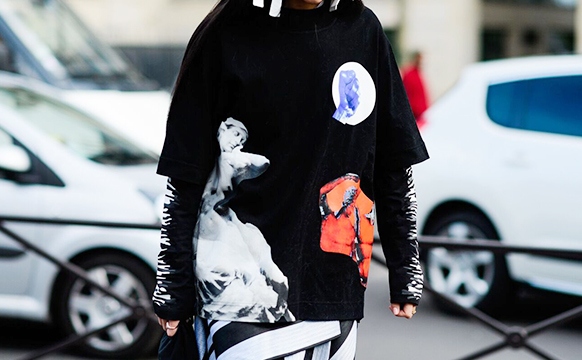
Since then, the T-shirt has served as an exceptional mode of self-expression and a platform for individuals to discuss everything from politics and music to environmental and social issues. In punk culture, the T-shirt was tied, twisted, pinned and painted on as part of the anti-fashion, DIY lifestyle. Rock and roll wouldn’t have been the same without musicians’ slashed and distressed iterations, plain white tees or, on the promotional side, tour merchandise. And in the ‘80s, designers like Vivienne Westwood and Katharine Hamnett slapped polarizing slogans across their T-shirts. Today, high-end labels are carrying on the legacy by addressing hot button issues and prompting consumers to continue the conversation.
Maria Grazia Chiuri told us we should all be feminists at Dior. Prabal Gurung shed light on issues of immigration, gender inequality and free speech with his black-and-white T-shirts. Demna Gvasalia questioned global consumerism and mocked the industry with his DHL-branded tops at Vetements. And though “protest fashion” can quickly be reduced to nothing more than empty, ineffective messaging, the ability to wear your beliefs on your chest, display brand loyalty and challenge the structure of society without saying a word is a pretty revolutionary concept.
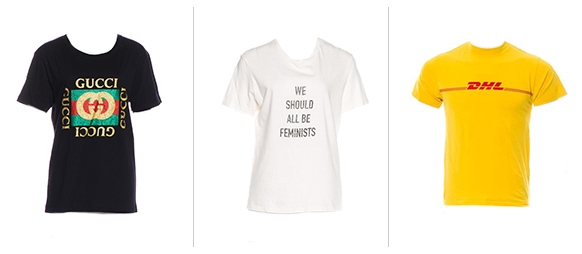
Gucci Glitter Logo T-Shirt; Dior 2017 “We Should All Be Feminists” T-Shirt; Vetements 2016 DHL T-Shirt



